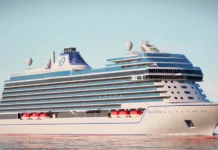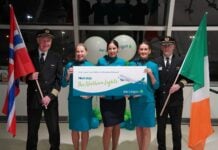
The Emirates Group today announced its half-year results for 2017-18. The Group saw steady revenue growth and a rebound on profitability compared to the same period last year, in spite of the continuing downward pressure on margins, a rise in oil prices, and other challenges for the airline and travel industry. Emirates’ global network now spans 156 destinations in 84 countries.
The Emirates Group revenue was AED49.4 billion (US$13.5 billion) for the first six months of its 2017-18 financial year, up 6% from AED46.5 billion (US$12.7 billion) during the same period last year.
Profitability rebounded after a low during the same period last year, with the Group reporting a 2017-18 half-year net profit of AED2.3 billion (US$631 million), up 77%. This result was driven by capacity optimisation and efficiency initiatives across the company, steady business growth, and a more favourable foreign exchange situation compared to the same period last year.
The Group’s cash position on 30th September 2017 was at AED18.9 billion (US$5.2 billion), compared to AED19.1 billion (US$5.2 billion) as at 31st March 2017.
HH Sheikh Ahmed bin Saeed Al Maktoum, Chairman and Chief Executive, Emirates Airline and Group, said: “A lot of the credit for our 2017-18 half-year results goes to our talented workforce who have worked hard to improve our business performance and to address our challenges without compromising on quality and service.
“Our margins continue to face strong downward pressure from increased competition, oil prices have risen, and we still face weak economic and uncertain political realities in many parts of the world. Yet, the Group has improved revenue and profit performance. This speaks to the resilience of our business model, and the agility of our people.
“The easing of the strong US dollar against other major currencies helped our profitability. We are also seeing the benefit from various initiatives across the company to enhance our capability and efficiency with new technologies and new ways of working. Moving forward, we will continue to keep a careful eye on costs while investing to grow our business and provide our customers with world-class products and services.”
In the past six months, the Group’s employee base reduced by 3% compared to 31st March 2017, from an overall staff count of 105,746 to 102,669. This was largely a result of natural attrition together with a slower pace of recruitment, as various parts of the business adopted new technologies, streamlined business processes and re-allocated resources.
Emirates Airline
Emirates continues to invest in the most advanced wide-body aircraft to improve overall efficiency and provide better customer experience. During the first six months of 2017-18, Emirates received 10 wide-body aircraft – four Airbus A380s, and six Boeing 777s, with nine more new aircraft scheduled to be delivered before the end of the financial year. It also retired five older aircraft from its fleet with a further four to be returned by 31st March 2018.
Emirates launched two new passenger services in the first six months of its financial year – to Zagreb (Croatia) and Phnom Penh (Cambodia). As of 30th September, Emirates’ global network spanned 156 destinations in 84 countries. Its fleet stood at 264 aircraft including freighters.
Emirates continues to provide ever better connections for its customers across the globe with just one stop in Dubai.
In July, the airline announced a partnership with flydubai, leveraging both airlines’ complementary networks to open new city-pair routings for customers, and optimise operations at Dubai International Airport. Emirates also announced it will extend its successful partnership with Qantas for a further five years in tandem with joint network adjustments that will offer travellers more connectivity and flight choices to and from Australia and New Zealand.
Overall capacity during the first six months of the year increased a modest 2% to 30.8 billion Available Tonne Kilometres (ATKM). Capacity measured in Available Seat Kilometres (ASKM), grew by 3%, while passenger traffic carried measured in Revenue Passenger Kilometres (RPKM) was up 5% with average Passenger Seat Factor rising to 77.2%, compared with last year’s 75.3%.
Emirates carried 29.2 million passengers between 1st April and 30th September 2017, up 4% from the same period last year. The volume of cargo uplifted at 1.3 million tonnes is up 5% while yield improved by 8%. This solid performance speaks to Emirates SkyCargo’s recent investments in products and services tailored to key sectors, and is also a positive sign of a gradual recovery in the global air freight market.
In the first half of the 2017-18 financial year, Emirates’ net profit is AED1.7 billion (US$452 million), up 111%, compared to last year. Emirates revenue, including other operating income, of AED44.5 billion (US$12.1 billion) was up 6% compared with the AED41.9 billion (US$11.4 billion) recorded during the same period last year. This result was driven by improved seat load factors, tight control on capacity deployment, and the strengthening of currencies in Emirates’ key markets against the US dollar.
Emirates’ operating costs grew by 4% against the overall capacity increase of 2%. On average, fuel costs were 14% higher compared to the same period last year, this was largely due to an increase in oil prices (up 11% compared to same period last year), as well as an increase in fuel uplift of 3% due to Emirates’ expanding fleet operations. Fuel remained the largest component of the airline’s cost, accounting for 26% of operating costs compared with 24% in the first six months of last year.




